Located in the heart of Europe, Switzerland stands out not only with its mountains, lakes, and magnificent natural landscapes but also with its rich culinary culture. The cultural diversity of different cantons, combined with the influences of German, French, and Italian cuisines, creates a unique world of gastronomy. For this reason, Swiss cuisine offers visitors a wide range not only with its traditional flavors but also with its regional differences.
Famous for its varieties of cheese, the country is recognized worldwide with iconic dishes such as fondue and raclette. However, Swiss cuisine is not limited to cheese alone; it features a rich variety of flavors ranging from potato dishes to delicious chocolates, from sausages to local desserts. Each of these dishes, reflecting the cultural fabric and history of the country, stands out as one of the most important elements that make a trip to Switzerland unforgettable.
1. Fondue
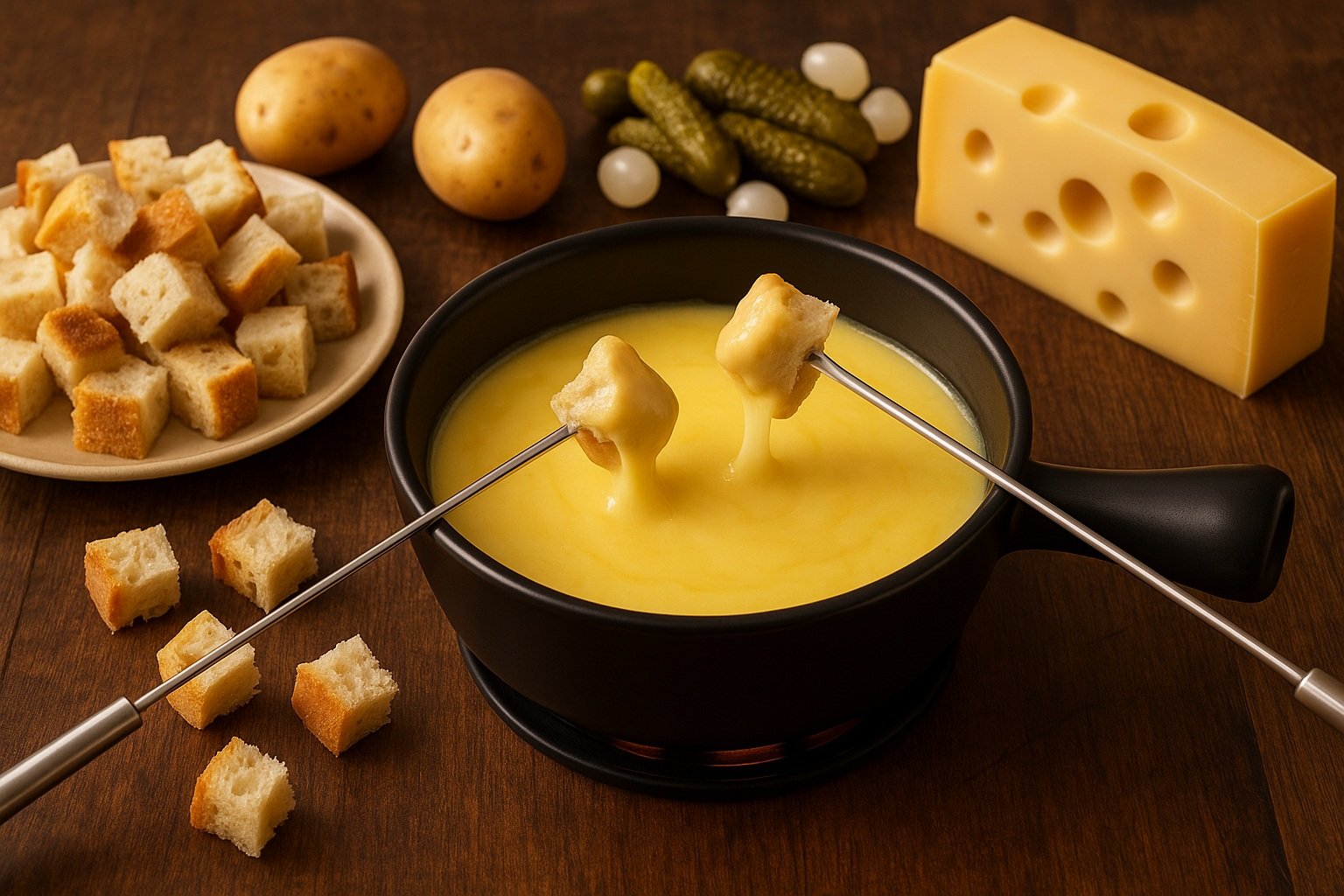
Fondue is one of the most well-known and most beloved dishes of Swiss cuisine. It is usually prepared with Swiss cheeses (mostly Gruyère and Emmental) melted with white wine in a special pot. Placed in the middle of the table, this pot is kept warm with a small flame underneath, and pieces of bread on long forks are dipped into the melted cheese and eaten. Sharing from a common pot makes fondue not only a meal but also a social experience.
In the winter months, especially after skiing in the Alpine regions, fondue stands out as both a satisfying and enjoyable tradition. Different varieties are made in different regions of Switzerland; for example, versions enriched with mushrooms, tomatoes, or herbal flavors can also be found. With its warmth, intense aroma, and reinforcement of the culture of sharing, fondue has become one of the indispensable symbols of Swiss cuisine.
2. Raclette
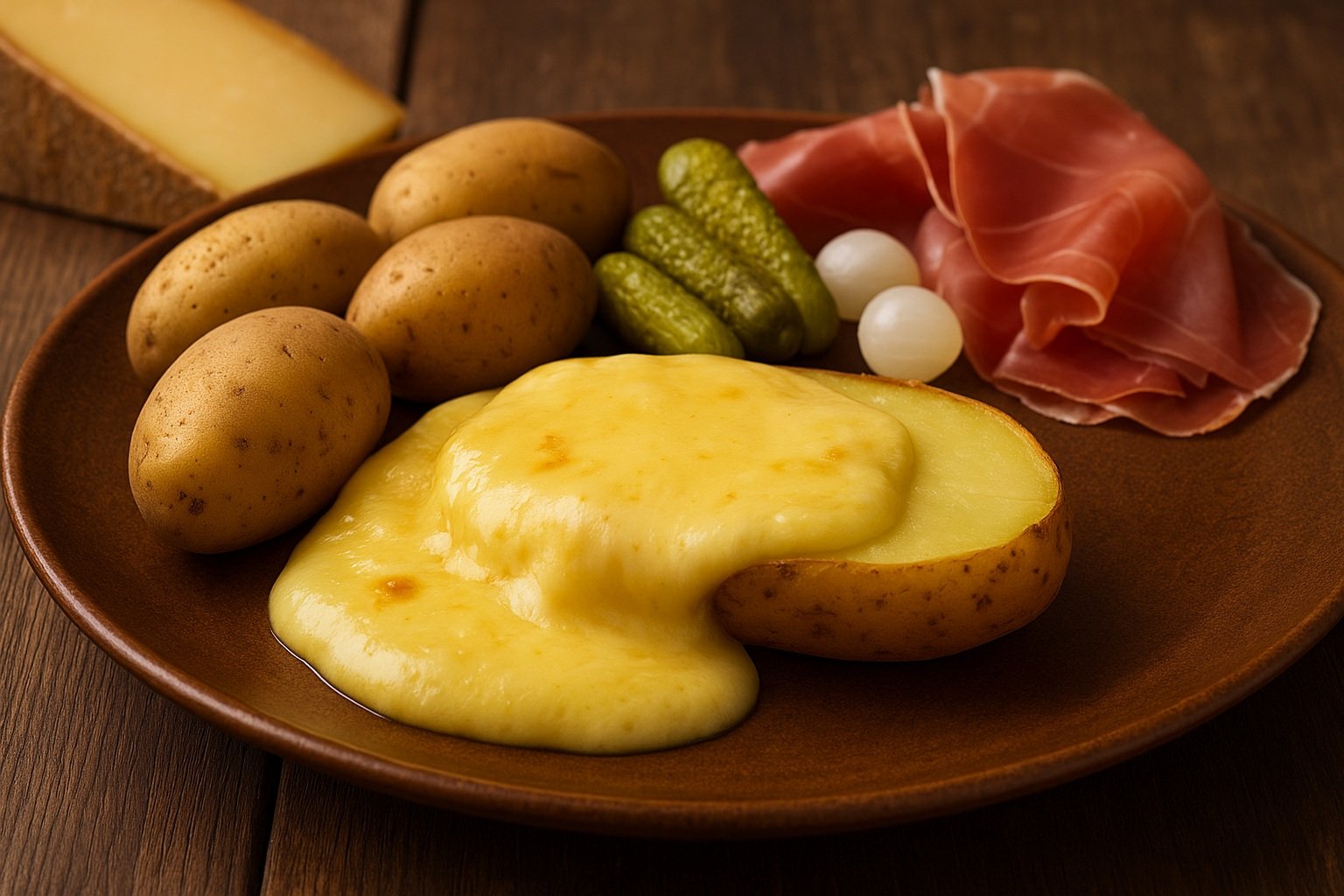
Raclette is one of the most famous traditional dishes of Swiss cuisine and takes its name from a special cheese of the same name. This cheese is melted and served hot together with potatoes, pickles, onions, and sometimes meat products. Traditionally, a large wheel of cheese is melted next to a fire or a special machine, and then the melted part is scraped onto the plate. This flavor, frequently preferred in Switzerland especially during the winter months, offers a meal experience that is both filling and enjoyable to share.
Considered a social meal, raclette is usually an indispensable part of family and friends’ gatherings. Accompanied by white wine or light drinks, this dish can be easily found both in Switzerland’s mountain villages and in modern city restaurants. With its soft texture, intense aroma, and harmony with different ingredients, raclette has become one of the dishes that best reflects Switzerland’s gastronomic culture.
3. Rösti
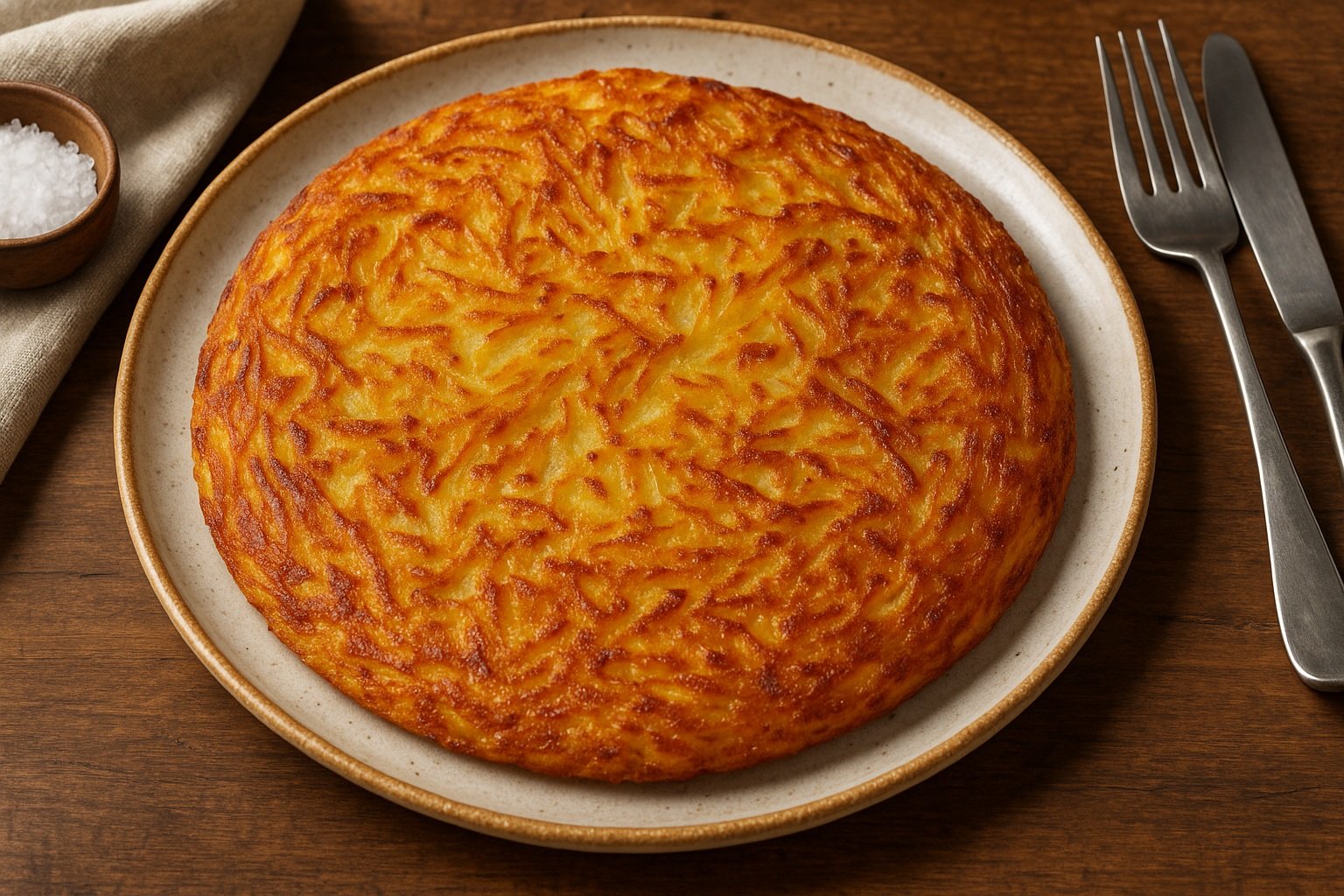
Rösti is one of the most well-known potato dishes of Switzerland and is often considered a national symbol. Prepared by frying grated potatoes in oil, this dish stands out with its crispy exterior and soft interior. It is usually served in a round and flat form and is one of the indispensable elements of Swiss breakfast tables. Thanks to its simple preparation, it is frequently preferred both in homes and in restaurants.
Originally emerging as a filling breakfast for farmers, rösti has been enriched over time with different varieties. By adding cheese, onions, bacon, or eggs, different flavors can be obtained. Today, rösti is consumed all over Switzerland, not only at breakfast but also served as a side dish alongside meat dishes. Its practicality and delicious taste have made it one of the most popular dishes in Swiss cuisine.
4. Älplermagronen
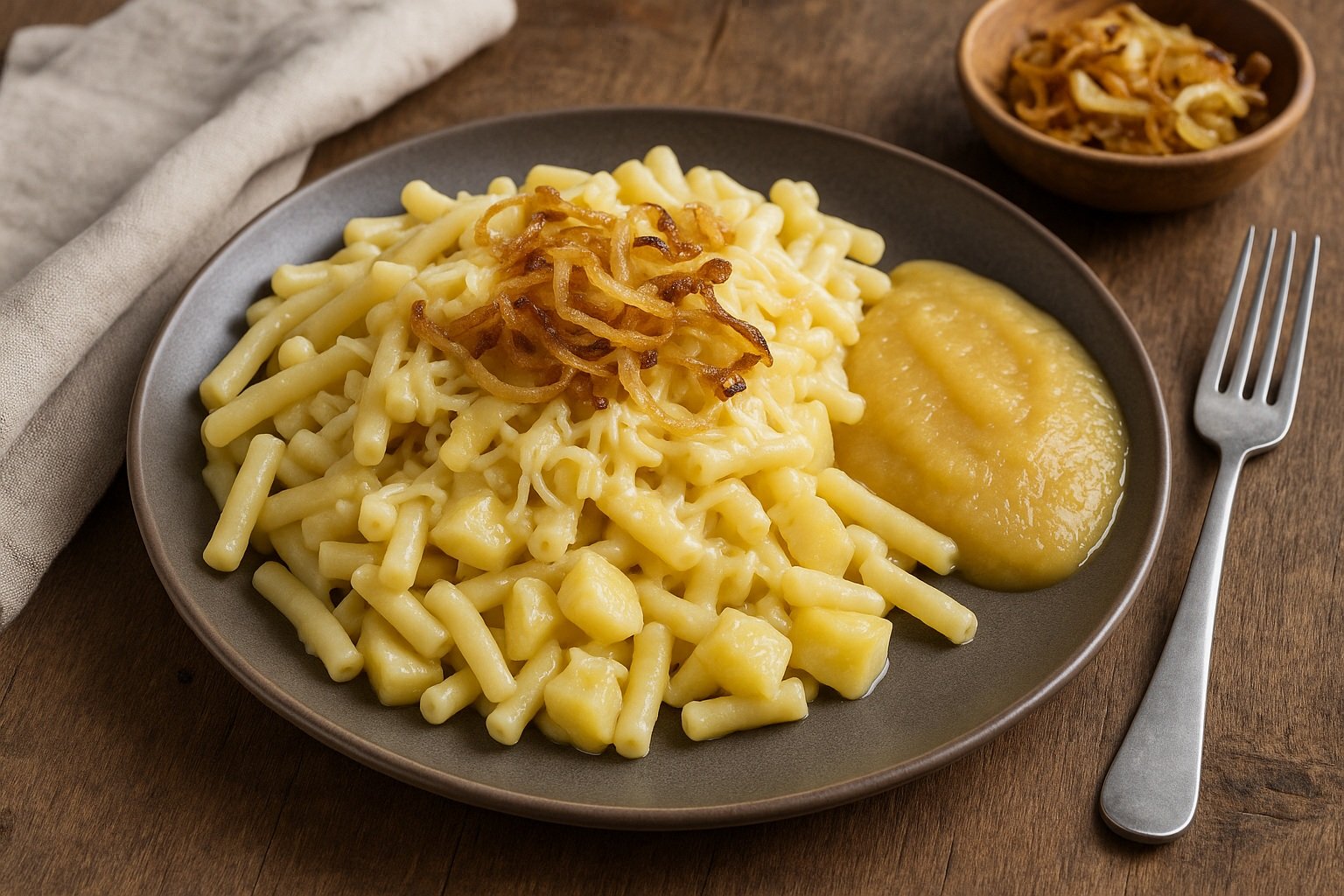
Älplermagronen is a traditional dish that originated in Switzerland’s mountainous regions, with its roots tracing back to the shepherds of the Alps. Prepared with pasta, potatoes, cream, onions, and Swiss cheese, this special recipe stands out for being both practical and filling. It is usually baked in the oven to allow the cheese to melt and blend with all the ingredients. Developed by shepherds using ingredients easily found in the mountains, this dish has over time become one of the indispensables of Swiss cuisine.
One of the most interesting features of Älplermagronen is that it is served with applesauce. Although it may seem like a surprising combination at first glance, the sweet applesauce adds a pleasant balance to the rich, cheesy, and creamy pasta. This traditional presentation makes the dish not only delicious but also unique. Today, Älplermagronen can often be found both in mountain huts and in city restaurants in Switzerland, making it one of the most authentic dishes that reflect the country’s cultural heritage.
5. Zürcher Geschnetzeltes
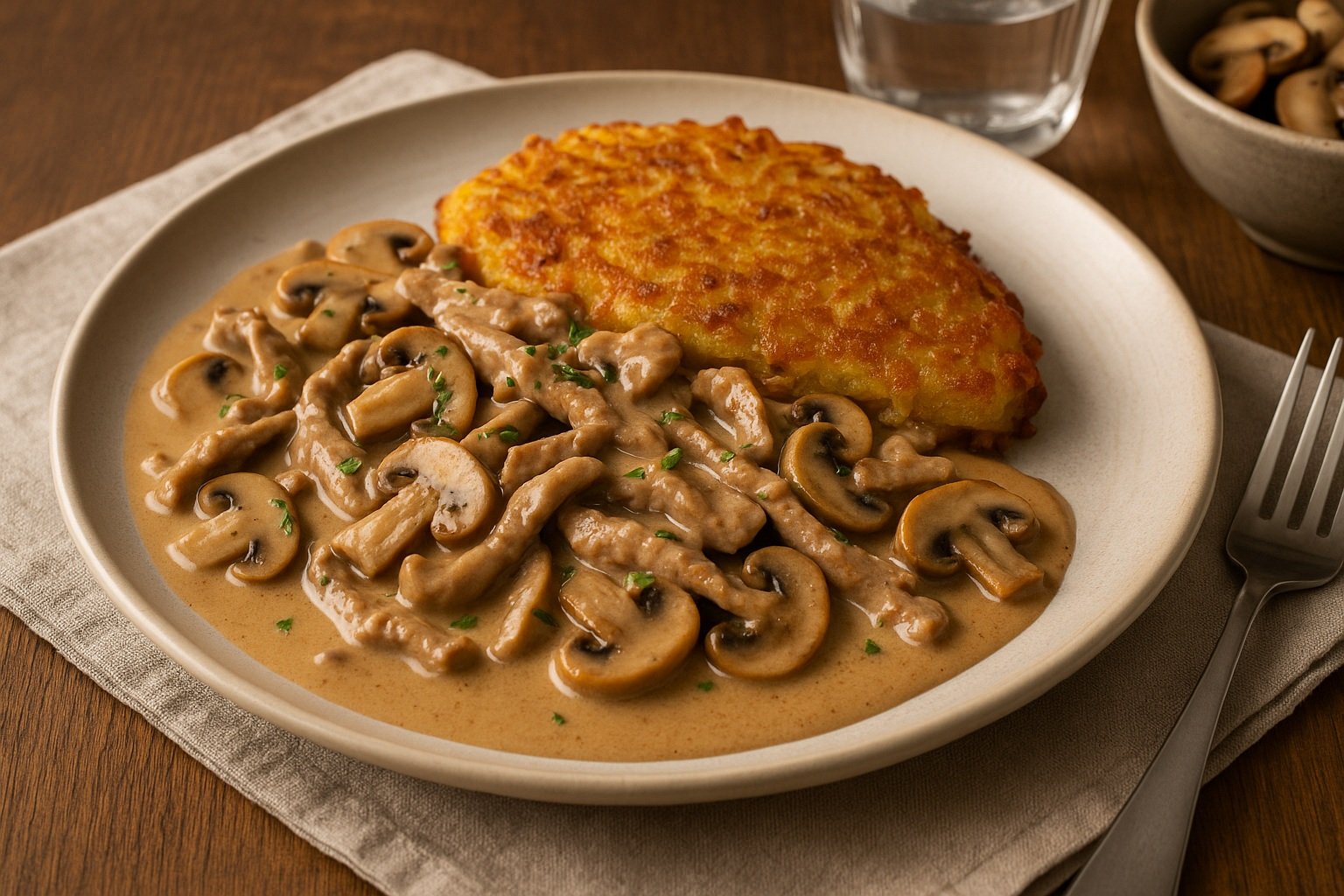
Zürcher Geschnetzeltes, as the name suggests, is a classic dish specific to the Swiss city of Zurich. Thinly sliced veal is sautéed together with mushrooms and onions, and then cooked in a special sauce prepared with white wine and cream. With its tender meat and rich creamy sauce, this recipe is preferred both in fine restaurants and in home cooking, and is considered one of the most elegant flavors of Swiss cuisine.
Usually served with Rösti, Zürcher Geschnetzeltes can also be complemented with different side dishes. Thanks to its creamy texture and aromatic taste, it adds value to tables both in daily meals and at special gatherings. Representing the urban culture of Swiss cuisine in the best way, this dish has become one of the gastronomic symbols of Zurich.
6. Bircher Müesli
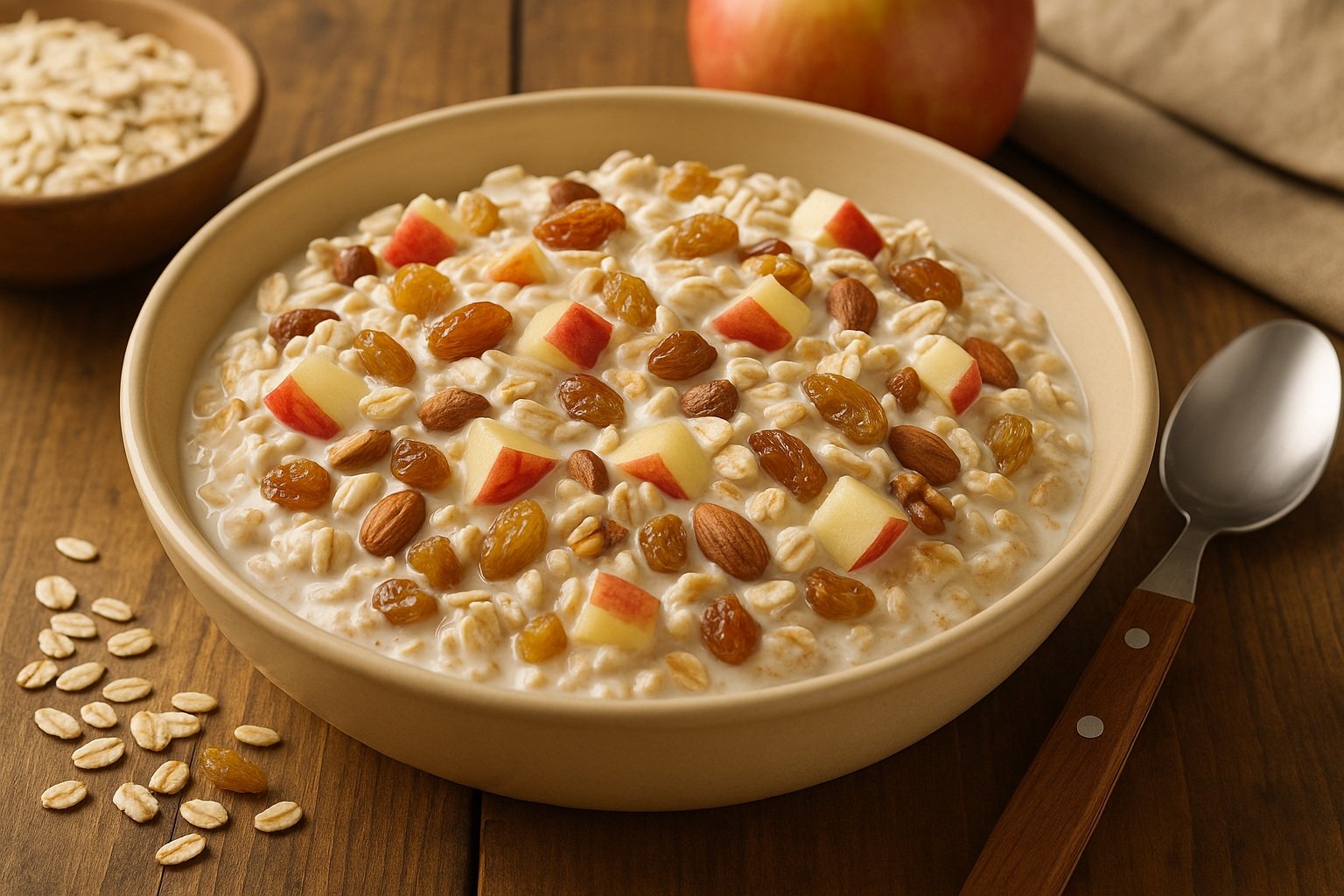
Bircher Müesli is one of the most famous breakfast foods that Switzerland has gifted to the world. Developed in the early 1900s by Swiss doctor Maximilian Bircher-Brenner, this recipe was originally prepared to provide his patients with a healthy nutritional option. Made from a combination of rolled oats, milk or yogurt, grated apple, nuts, and dried fruits, this light and nutritious mix quickly spread throughout Switzerland and became an indispensable part of its breakfast culture.
Today, Bircher Müesli is consumed not only in Switzerland but also around the world in different variations. This breakfast can be enriched with fresh fruits, honey, or different kinds of nuts, and is preferred for being both healthy and practical. Thanks to its energizing and filling nature, it stands out as an ideal option to start the day, especially on busy mornings. As one of the healthiest and most globalized flavors of Swiss cuisine, Bircher Müesli is also a pioneer of modern nutrition.
7. Basler Läckerli
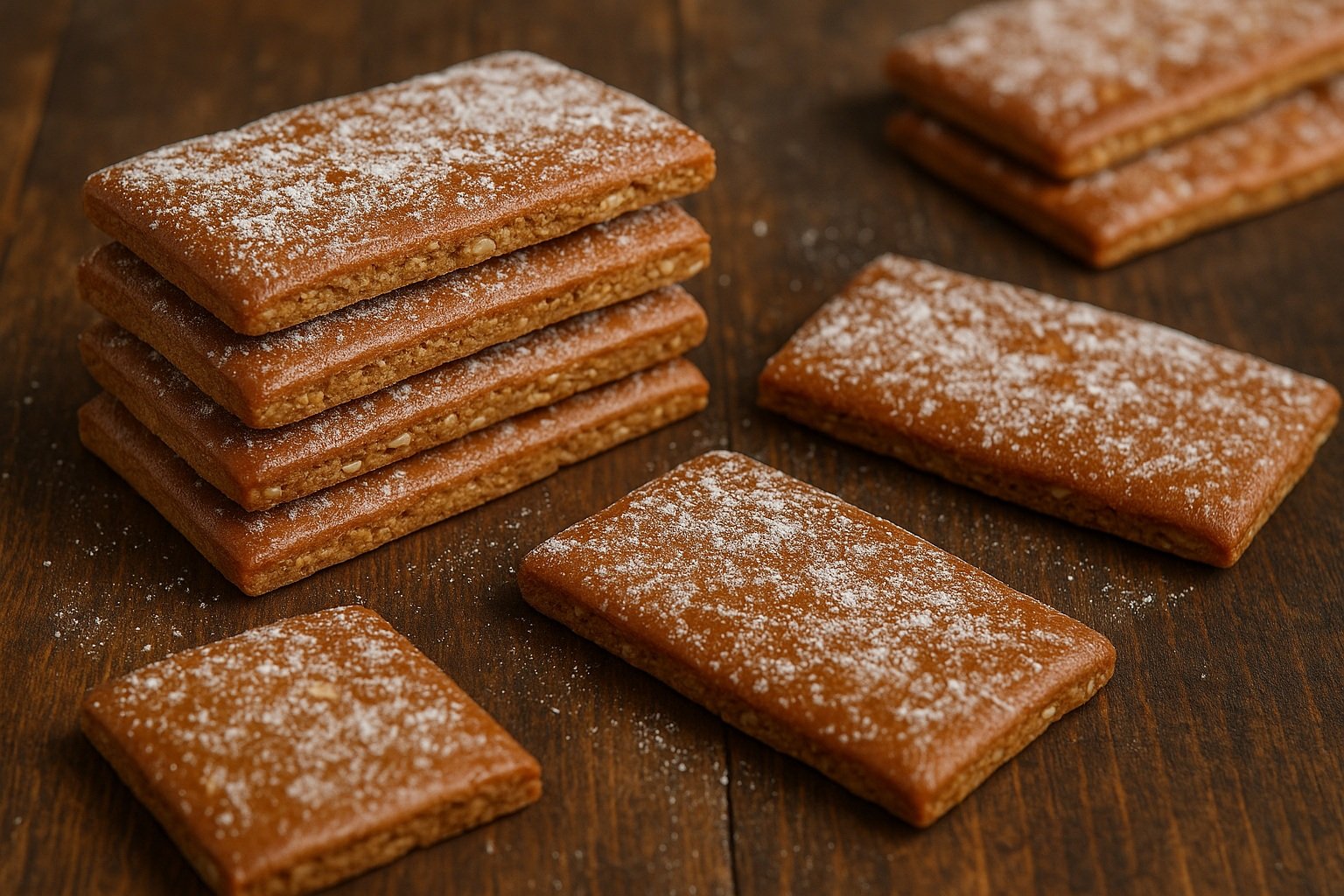
Basler Läckerli is a traditional dessert originating from the Swiss city of Basel, with roots dating back to the 14th century. Made with honey, hazelnuts, almonds, candied fruit peels, and special spices, this hard cookie stands out with its intense aroma. Since the Middle Ages, Läckerli has been one of the symbols of Basel and is among the most consumed Swiss sweets both during the Christmas season and throughout the year.
Thanks to its rich ingredients, Basler Läckerli is both a nutritious and filling snack, often enjoyed with coffee or tea. Today, while it can be found all over Switzerland, its most authentic form is still made in the bakeries of Basel. With its firm texture and spicy flavor, this delicacy distinguishes itself from other cookies and stands out as one of the most original desserts reflecting Switzerland’s cultural heritage.
8. Saffron Risotto (Risotto allo Zafferano)
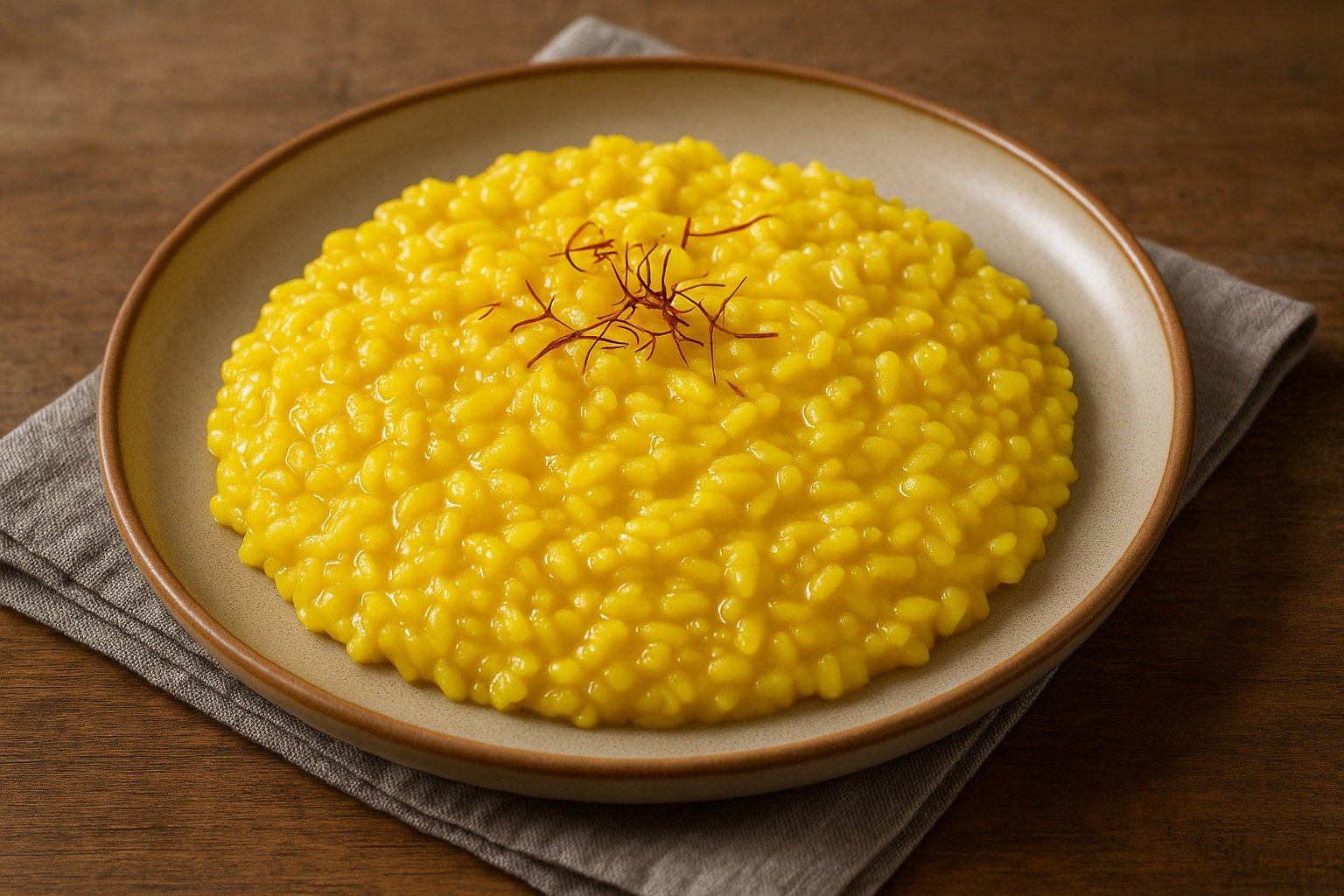
Saffron Risotto (Risotto allo Zafferano) is an elegant dish popular especially in Switzerland’s Italian-speaking Ticino region, with its origins in Italy. Prepared with the distinctive golden color and intense aroma of saffron, this risotto stands out with its creamy texture and rich flavor. The slow cooking of arborio rice combined with saffron offers both a bright color that appeals to the eye and a lasting taste on the palate.
Usually preferred at special gatherings or in fine restaurants, saffron risotto can be served plain or enriched with seafood, vegetables, or meat. Reflecting Switzerland’s cultural diversity, this dish brings the refinement of Italian cuisine to the Swiss table. Found in both traditional and modern kitchens, Saffron Risotto has become a dish that attracts attention not only with its taste but also with its aesthetic appearance.
9. Saucisse de Vaud
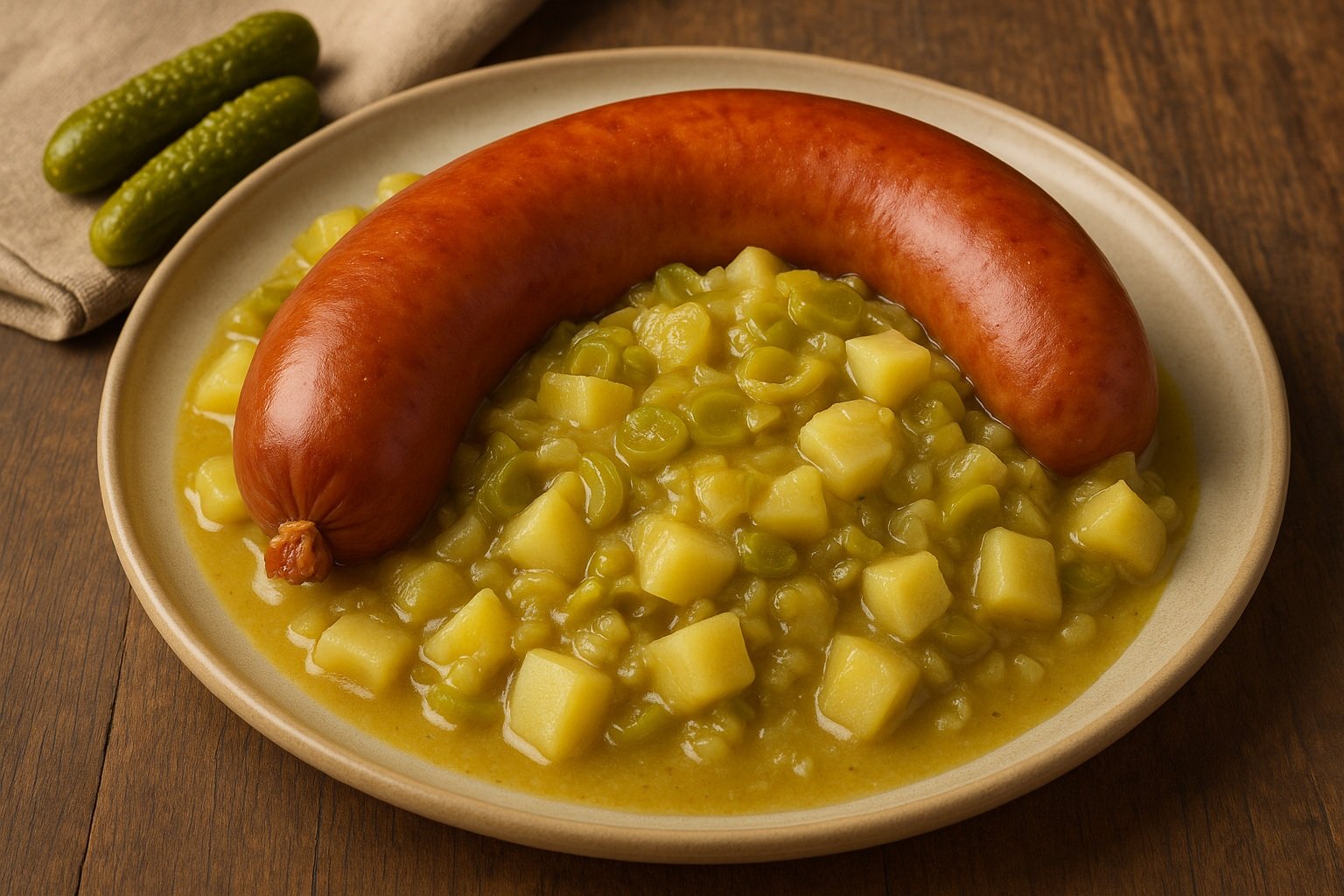
Saucisse de Vaud is a traditional type of sausage specific to the Swiss canton of Vaud. Made with high-quality pork, this sausage is usually flavored with garlic, spices, and white wine. Standing out with its thick and hearty texture, Saucisse de Vaud is a filling delicacy especially preferred alongside hot dishes during the cold winter months. Holding an important place in Switzerland’s gastronomic culture, this sausage often graces tables at local festivals and on special occasions.
The dish it is most commonly paired with is Papet Vaudois; prepared with cabbage, leeks, and potatoes, this dish together with Saucisse de Vaud has become a symbol of the region. Cooked slowly, the sausage both preserves its aroma and achieves perfect harmony with the other ingredients. Found everywhere from traditional village meals to gourmet restaurants, Saucisse de Vaud is one of the most authentic Swiss flavors reflecting the cultural identity of the Vaud canton.
10. Papet Vaudois
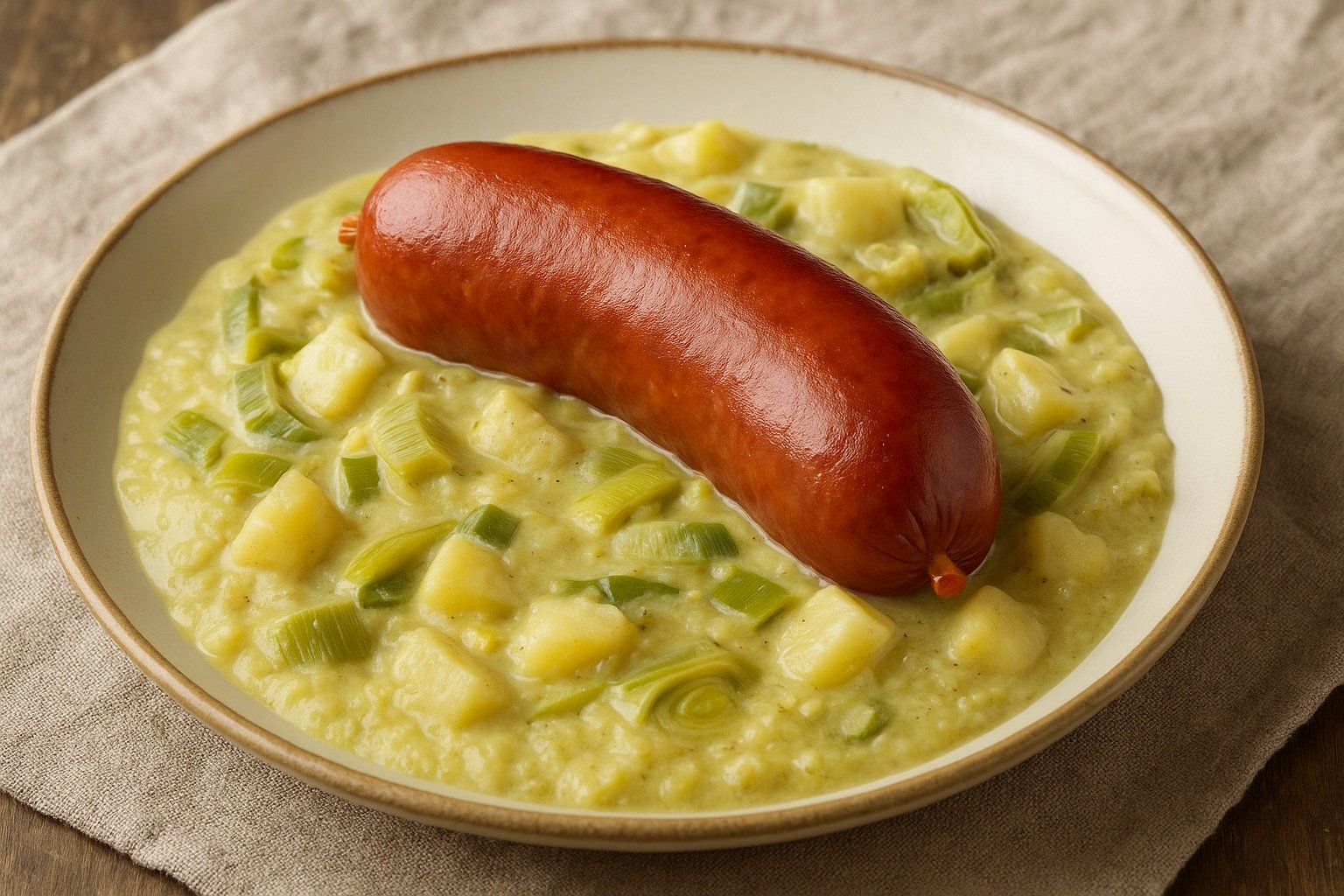
Papet Vaudois is one of the most well-known traditional dishes specific to the Swiss canton of Vaud. Prepared by cooking cabbage, leeks, and potatoes for a long time, this dish results in a thick and creamy vegetable mixture. With its nutritious and filling nature, it is often preferred during the cold winter months. Consumed in rural areas for centuries, Papet Vaudois is considered one of the most important symbols of Vaud cuisine.
It is usually served together with the local sausage called Saucisse de Vaud, and this duo is a source of pride for the canton. Thanks to the slow cooking of potatoes and vegetables, which allows them to release their flavors, the result is a dish that is both simple and rich in aroma. Reflecting Switzerland’s gastronomic diversity, Papet Vaudois is one of the most authentic flavors that carry the region’s cultural identity and traditional culinary habits into the present day.
11. Capuns

Capuns is a traditional dish specific to Switzerland’s Graubünden region. Pieces of dough wrapped in chard leaves are usually enriched with dried meat or sausage pieces. These roll-like delicacies are cooked by boiling them in milk or broth and then served with melted butter or cream sauce. Both visually appetizing and filling, capuns best reflects the culinary culture of the mountainous regions.
Born from peasant cuisine, this dish eventually made its way onto the menus of Switzerland’s fine restaurants. Although it is prepared with simple ingredients, its labor-intensive preparation has made capuns a traditional delicacy often enjoyed on special occasions. While the filling ingredients may vary in different regions, the characteristic taste of chard leaves combined with the creamy sauce makes every version of capuns unique. Reflecting Switzerland’s cultural diversity, this dish is among the must-try flavors, especially for those visiting Graubünden.
12. Polenta
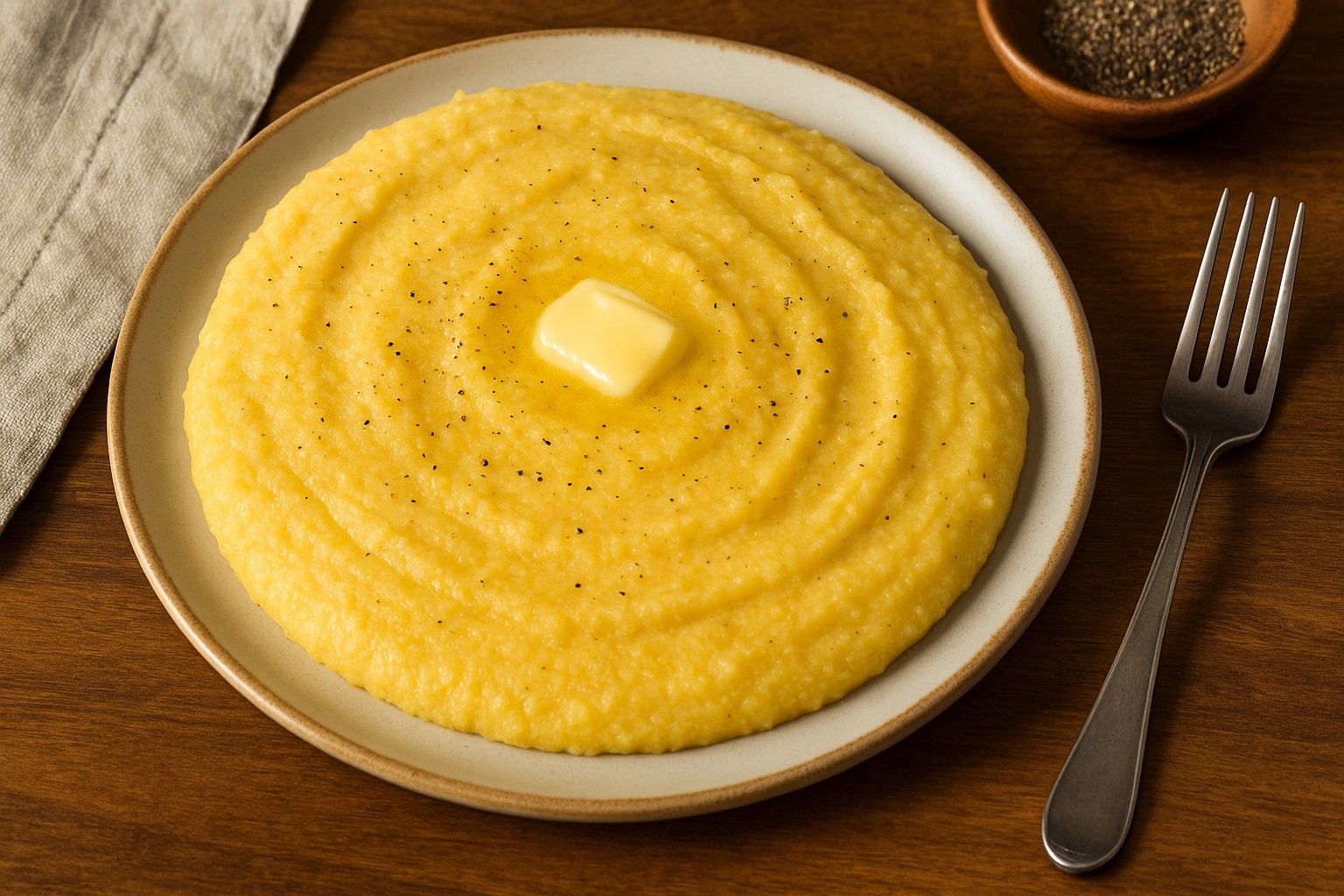
Polenta is a traditional cornmeal dish that is especially common in Switzerland’s Italian-speaking Ticino region. It is prepared by gradually adding cornmeal to boiling water while stirring continuously until it becomes a thick porridge. It can be consumed plain with the addition of butter or cheese, or it is often served as a side dish alongside meat dishes. Its ability to keep one full for a long time and its preparation with simple ingredients have made polenta indispensable in both rural cuisine and modern tables.
It can be served hot in a soft form, or after cooling it can be molded, sliced, and fried or grilled. In this way, polenta is a highly versatile dish and has been one of the staple foods on the tables of Switzerland’s mountain villages from past to present. Reflecting the cultural identity of the Ticino canton, this dish, with its humble yet delicious nature, is one of the important components of Swiss cuisine.
13. Malakoff
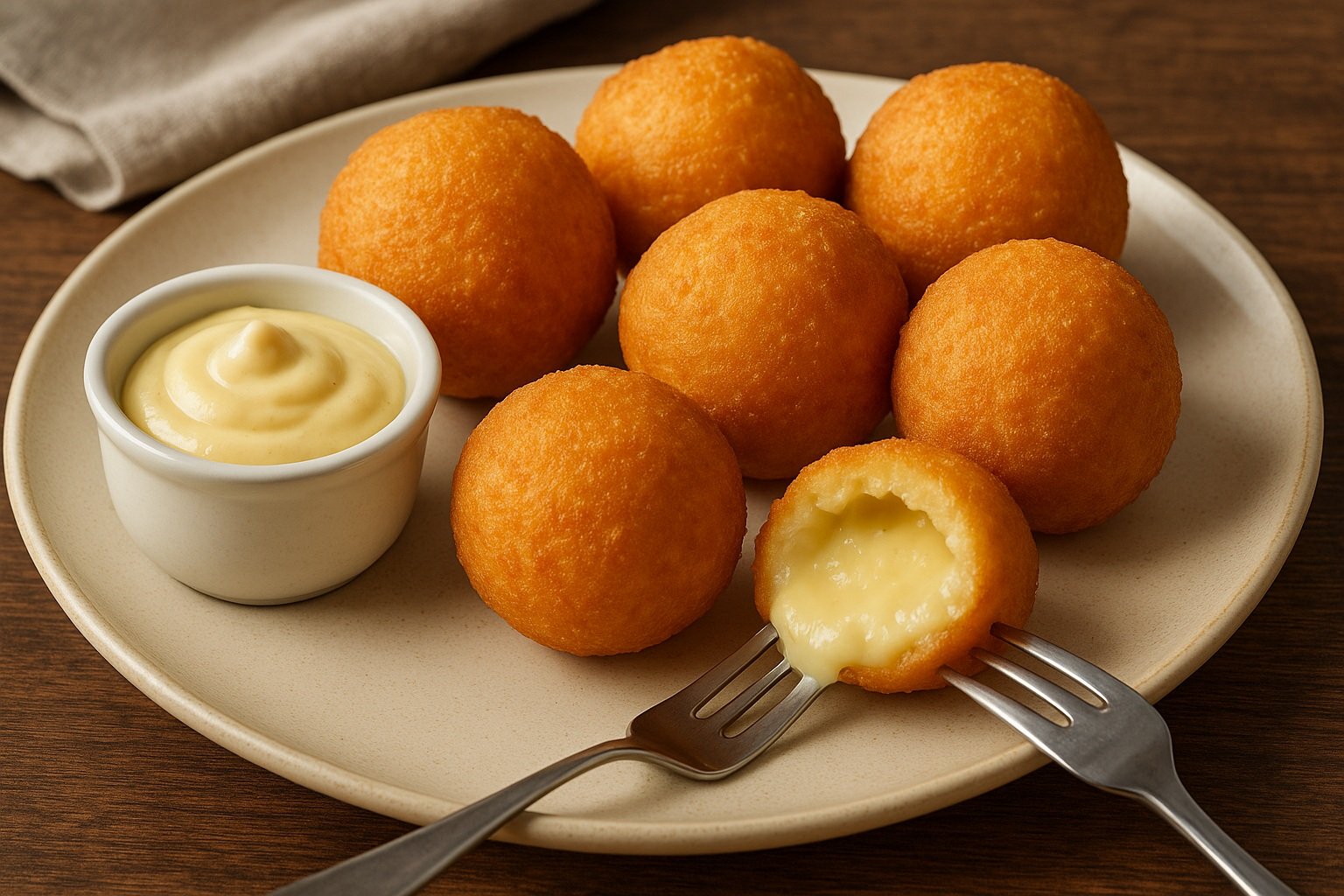
Malakoff is a traditional dish from Switzerland’s Vaud canton, consisting of deep-fried cheese balls. It is usually prepared using Swiss cheeses such as Gruyère or Emmental. Flour, eggs, and wine are added to the cheese mixture, which is then shaped into small balls or cylinders and deep-fried. With its crispy exterior and molten, rich cheese interior, Malakoff is especially preferred as an appetizer or snack.
This delicacy originated in the 19th century thanks to Swiss mercenaries returning from the Crimean War and eventually became a part of Vaud’s cuisine. Today, it still stands out as a popular dish, especially in regions with vineyards, where it is served together with local wines. With its intense flavor and crispy texture, Malakoff is considered one of the most original and enjoyable delicacies of Swiss cuisine.
14. Nusstorte (Engadiner Nusstorte)

Nusstorte (Engadiner Nusstorte) is a famous walnut tart specific to Switzerland’s Graubünden canton. It consists of a crispy pastry base and top, with a filling of walnuts caramelized with sugar inside. With its dense texture and rich aroma, this dessert offers a satisfying flavor. Made in the region for centuries, this special tart has become a staple of Swiss tables both in daily life and on special occasions.
Today, Nusstorte is known not only in Graubünden but also throughout Switzerland and even internationally. It is often enjoyed with coffee or tea and also stands out as one of the most authentic souvenirs that can be bought from Switzerland. Although the traditional recipe has been preserved, some bakeries produce their own special versions with different touches. In this respect, Engadiner Nusstorte is a rare Swiss dessert that carries the traces of the past while appealing to modern tastes.
15. Bratwurst
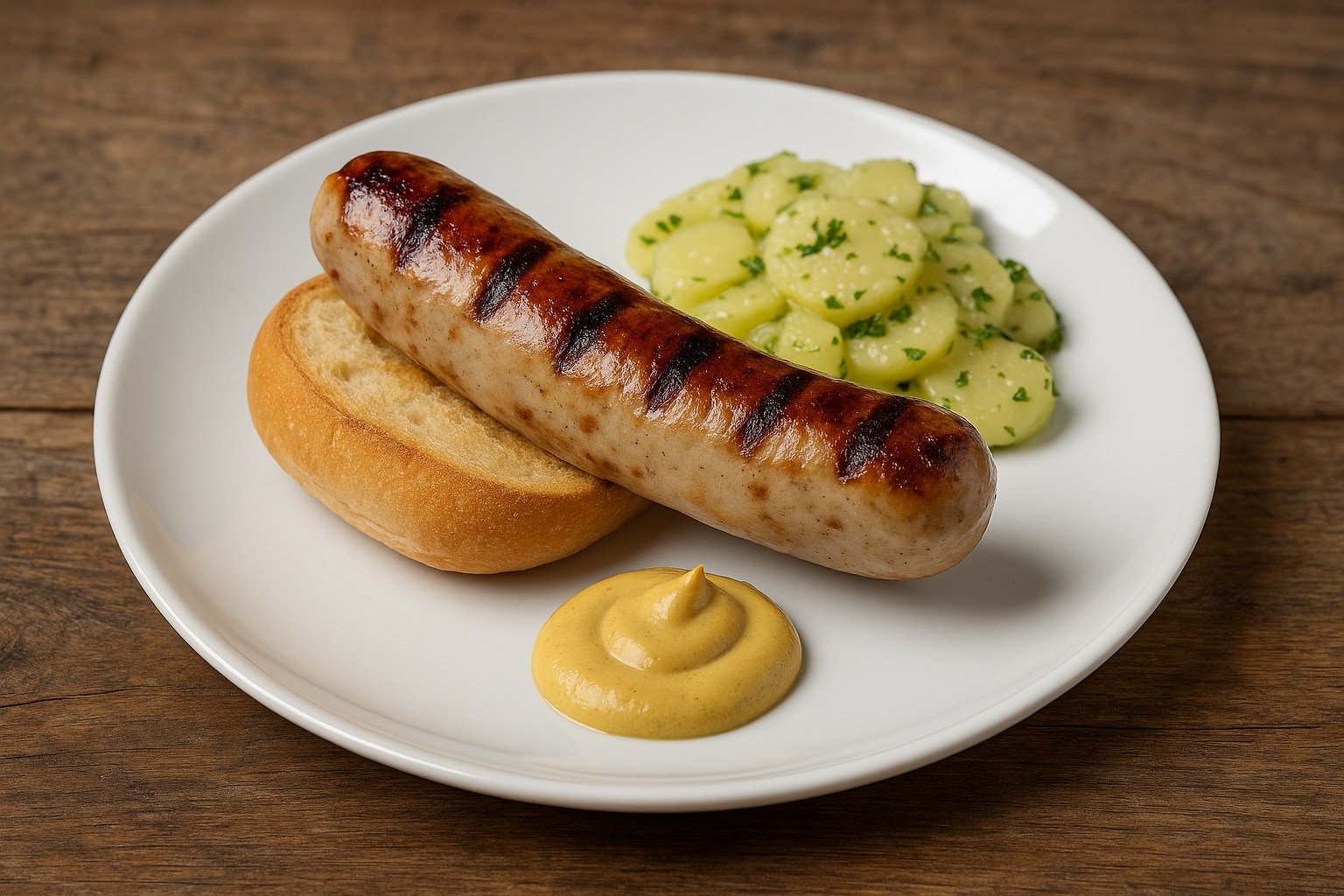
Bratwurst is one of the most well-known types of sausages, widely consumed not only in Switzerland but also in German-speaking countries. In Switzerland, this sausage is usually made from pork or beef, flavored with spices, and grilled. It is especially popular during summer festivals, outdoor events, and street food gatherings. When grilled, it develops a crispy outer skin while remaining soft and juicy inside, which is one of the main features that enhances the taste of Bratwurst.
In Switzerland, Bratwurst is usually served with bread, mustard, or potato salad. With its simple and filling nature, it can be both a quick snack and a main meal alternative. When enjoyed with local beer or wine, it becomes an inseparable part of Swiss street culture. As both a reflection of traditional cuisine and a staple of daily life, Bratwurst is a food loved by people of all ages in Switzerland.
16. Schüblig
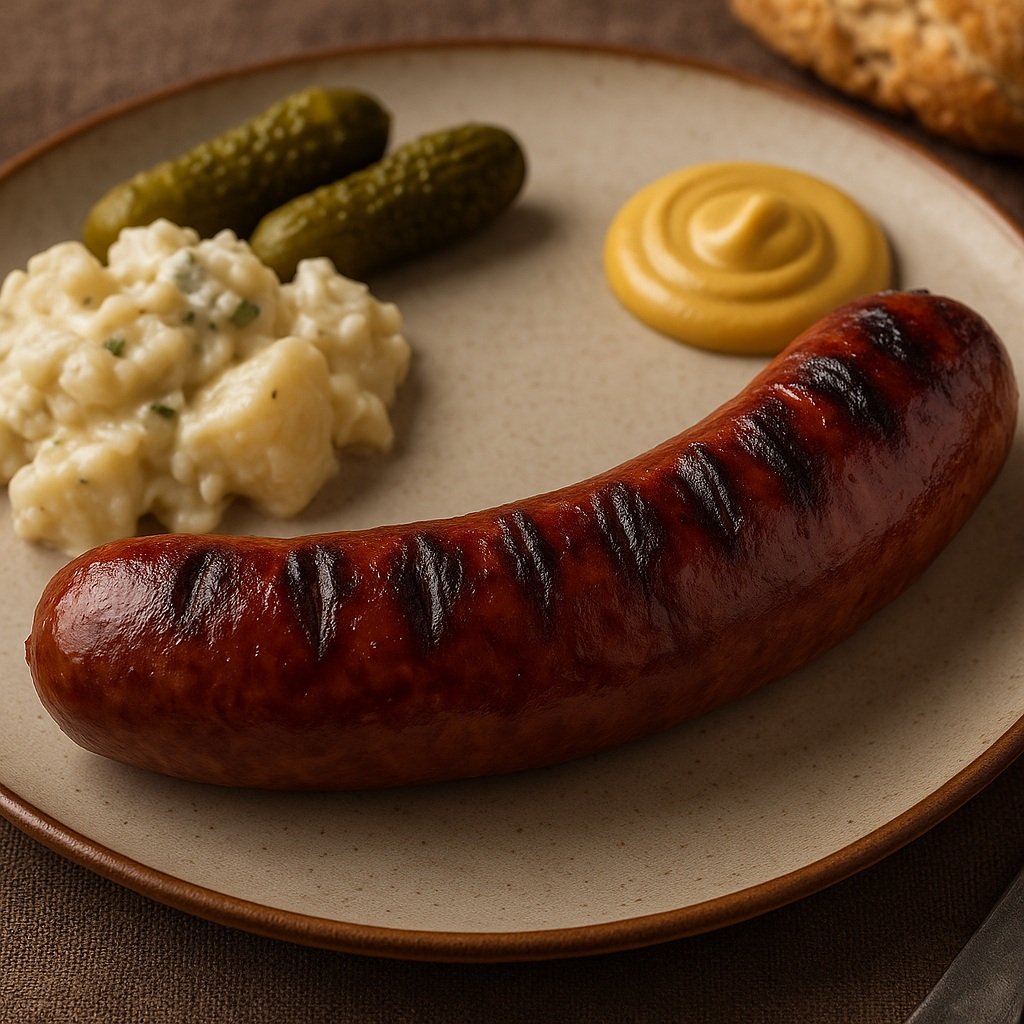
Schüblig is one of the most beloved traditional types of sausages in Switzerland and is especially widely consumed in the German-speaking regions. Distinguished by its thick texture, this sausage is prepared by blending beef and pork with special spices. The smoked versions have a more intense aroma, while the fresh varieties offer a lighter flavor. It is a hearty food that finds its place in Swiss cuisine both in daily meals and at special events.
Usually served with bread, mustard, and potato salad, Schüblig is often grilled and enjoyed at outdoor events. It has become one of the indispensable foods of picnics, festivals, and folk celebrations in Swiss culture. With its practicality and rich flavor, Schüblig has secured an important place in Switzerland’s culinary culture and has remained a popular delicacy for generations.
17. Älpler Rösti
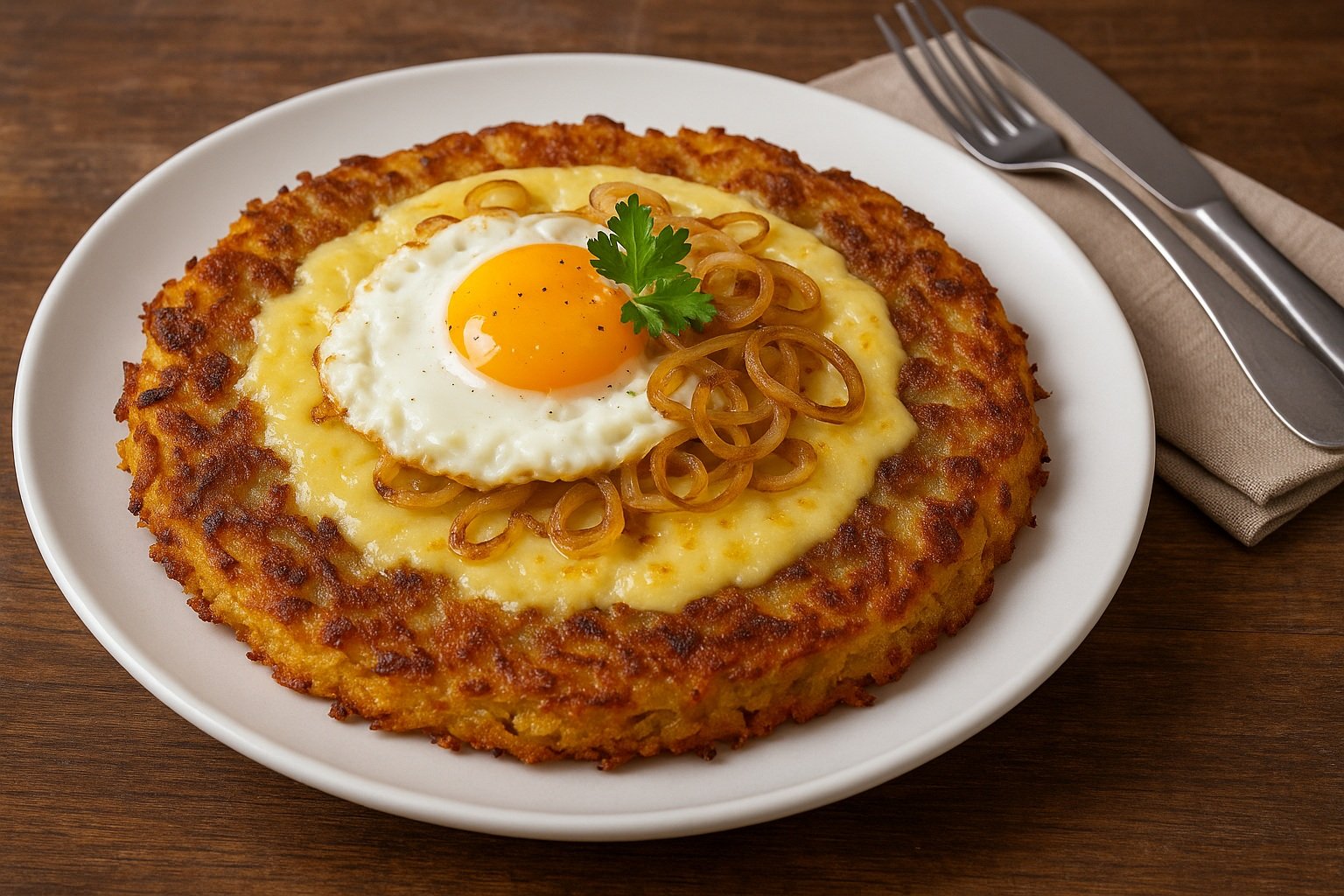
Älpler Rösti is a version of the traditional rösti dish that originated in Switzerland’s mountain villages and has been enriched with additional ingredients. Based on grated potatoes fried to make rösti, it is prepared with the addition of cheese, onions, and sometimes eggs. Thanks to these extra ingredients, it becomes both more filling and more aromatic. As it provided a strong source of energy for shepherds and villagers working in the mountains, it has been one of the cornerstones of Swiss cuisine for centuries.
Today, Älpler Rösti is a popular dish served not only in rural areas but also frequently in city restaurants. It is usually complemented with salami, bacon, or fresh vegetables. Reflecting Switzerland’s culinary culture enriched with dairy products and potatoes, this dish stands out as a hearty and traditional flavor that can be enjoyed both at breakfast and as a main course.
18. Zopf

Zopf is one of the most well-known types of bread in Switzerland and stands out especially as an indispensable part of Sunday breakfasts. This white bread, named after its braided appearance, is made using milk, butter, yeast, and flour. With its soft interior texture and slightly sweet aroma, it is extremely delicious whether eaten plain or with butter, honey, or jam. It is one of the most special baked goods reflecting Switzerland’s homemade traditions.
Zopf is traditionally served at family tables on Sunday mornings and symbolizes the culture of sharing. Found in many bakeries across Switzerland, this bread is also preferred on holidays and special celebrations. Although it does not have a long shelf life, its freshness and aroma make it a product consumed quickly. Adding elegance to tables with its visual appeal, Zopf is one of the most iconic and beloved breads of Swiss cuisine.
19. Swiss Chocolate

Swiss Chocolate is one of Switzerland’s most globally recognized symbols. Beginning to develop in the 19th century, the Swiss chocolate industry gained great fame with the first production of milk chocolate here. Thanks to its rich aroma, smooth texture, and high-quality standards, Swiss chocolates quickly became a symbol of luxury and taste worldwide. Brands such as Lindt, Toblerone, and Cailler represent Switzerland’s pioneering role in this field.
Swiss chocolate has been enriched not only through industrial production but also thanks to small-scale boutique chocolatiers. Handmade pralines, truffles, and special varieties prepared with different flavors attract great interest both as gifts and for daily consumption. Reflecting the perfect harmony of cocoa and milk, Swiss chocolates are not only a sweet treat but also an important part of the country’s cultural and economic heritage.
20. Cheese Tart (Chäschüechli)
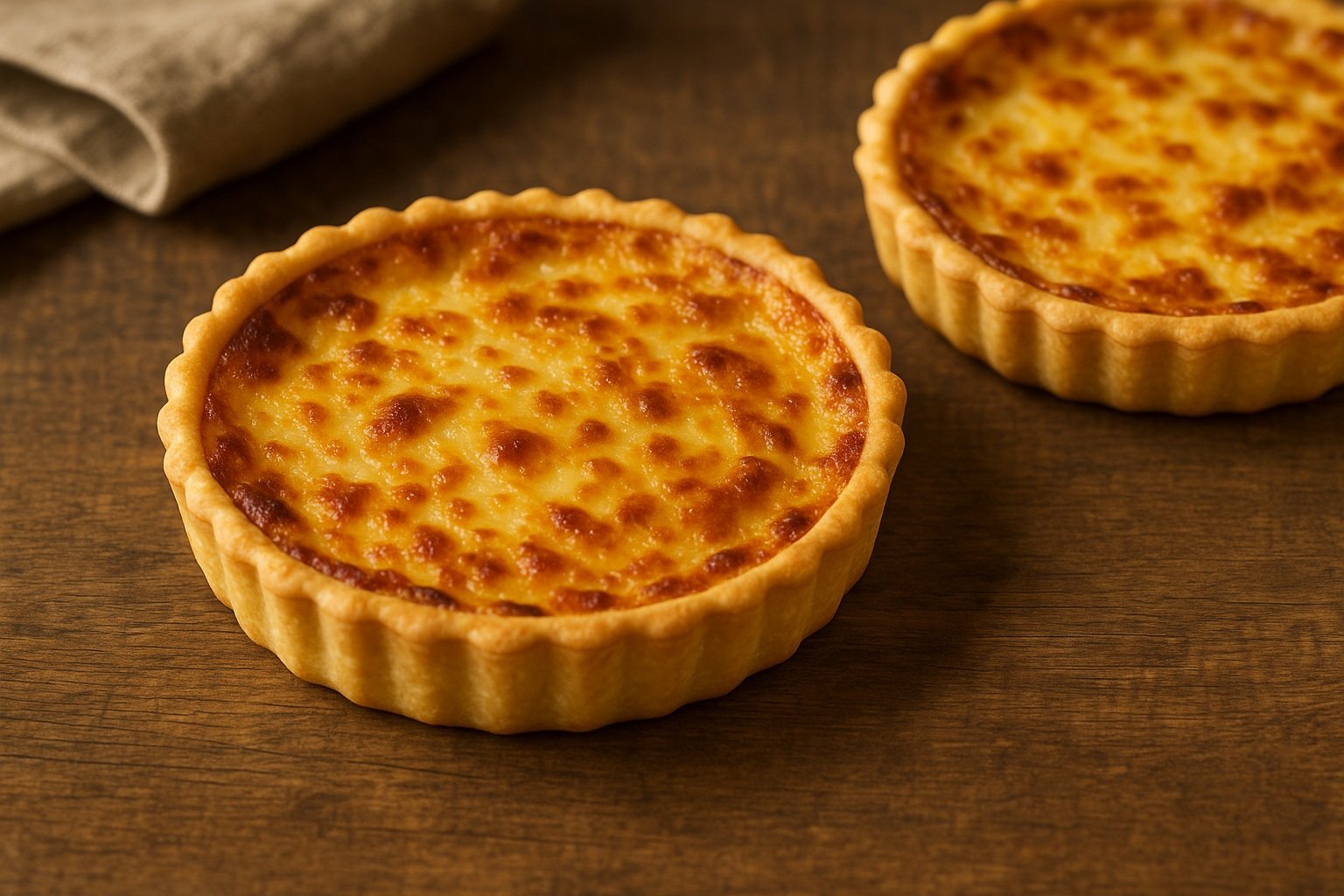
Cheese Tart (Chäschüechli) is one of the beloved snacks of Swiss cuisine. Prepared in small tart molds, this delicacy is made with a rich cheese filling placed inside a crisp pastry. The use of local Swiss cheeses such as Gruyère, Emmental, or Appenzeller adds a characteristic aroma and richness to it. It is usually baked to achieve a golden crust and served hot or warm.
Chäschüechli is frequently found in bakeries and cafés in Switzerland. It is preferred as a practical option for a lunch snack, a light dinner, or served with a salad. These mini cheese tarts, both filling and delicious, are among the finest examples reflecting Switzerland’s expertise in dairy products. In addition, thanks to its easy preparation, homemade versions are also quite popular.
